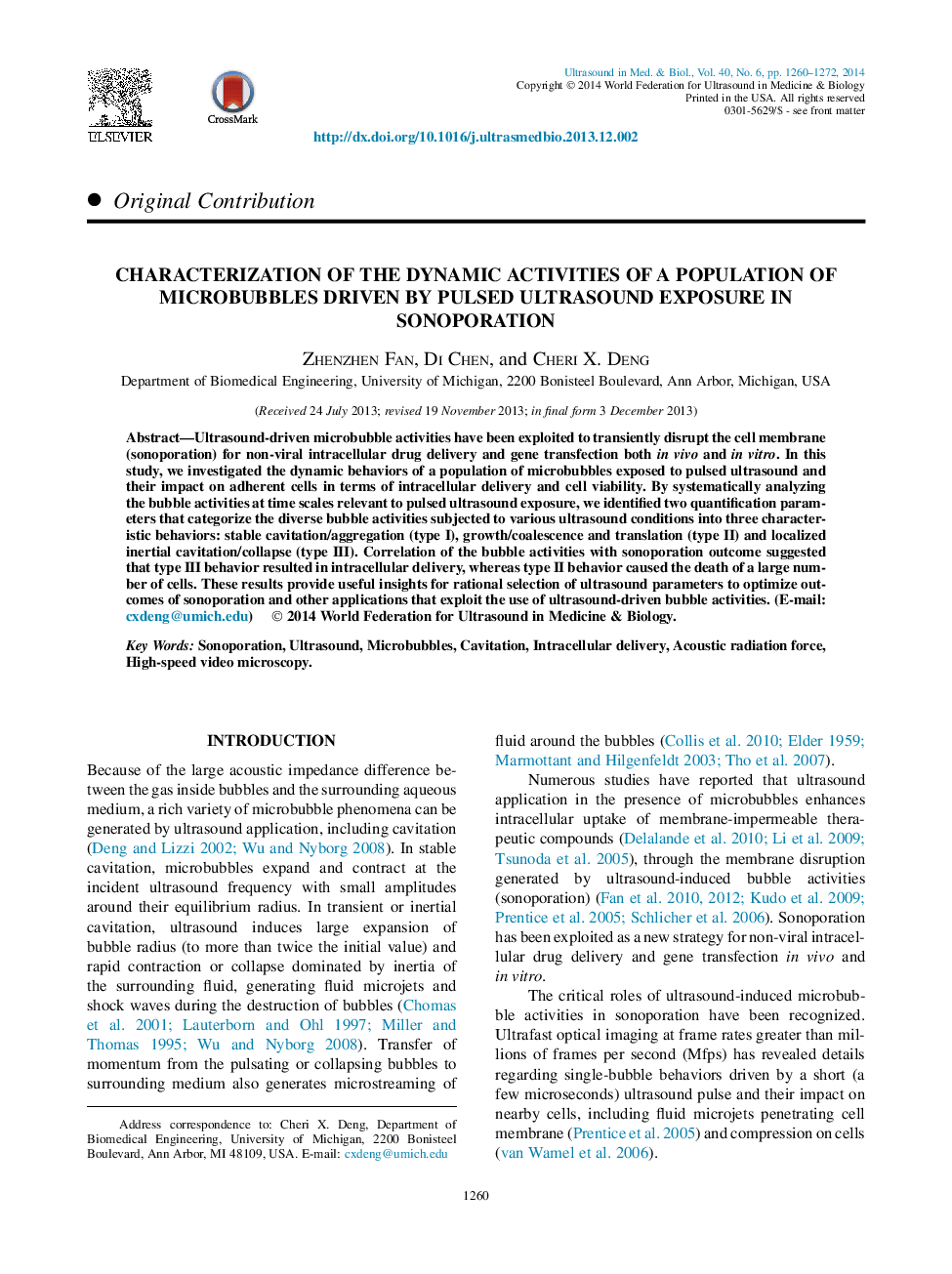| Article ID | Journal | Published Year | Pages | File Type |
|---|---|---|---|---|
| 10691760 | Ultrasound in Medicine & Biology | 2014 | 13 Pages |
Abstract
Ultrasound-driven microbubble activities have been exploited to transiently disrupt the cell membrane (sonoporation) for non-viral intracellular drug delivery and gene transfection both in vivo and in vitro. In this study, we investigated the dynamic behaviors of a population of microbubbles exposed to pulsed ultrasound and their impact on adherent cells in terms of intracellular delivery and cell viability. By systematically analyzing the bubble activities at time scales relevant to pulsed ultrasound exposure, we identified two quantification parameters that categorize the diverse bubble activities subjected to various ultrasound conditions into three characteristic behaviors: stable cavitation/aggregation (type I), growth/coalescence and translation (type II) and localized inertial cavitation/collapse (type III). Correlation of the bubble activities with sonoporation outcome suggested that type III behavior resulted in intracellular delivery, whereas type II behavior caused the death of a large number of cells. These results provide useful insights for rational selection of ultrasound parameters to optimize outcomes of sonoporation and other applications that exploit the use of ultrasound-driven bubble activities.
Related Topics
Physical Sciences and Engineering
Physics and Astronomy
Acoustics and Ultrasonics
Authors
Zhenzhen Fan, Di Chen, Cheri X. Deng,
